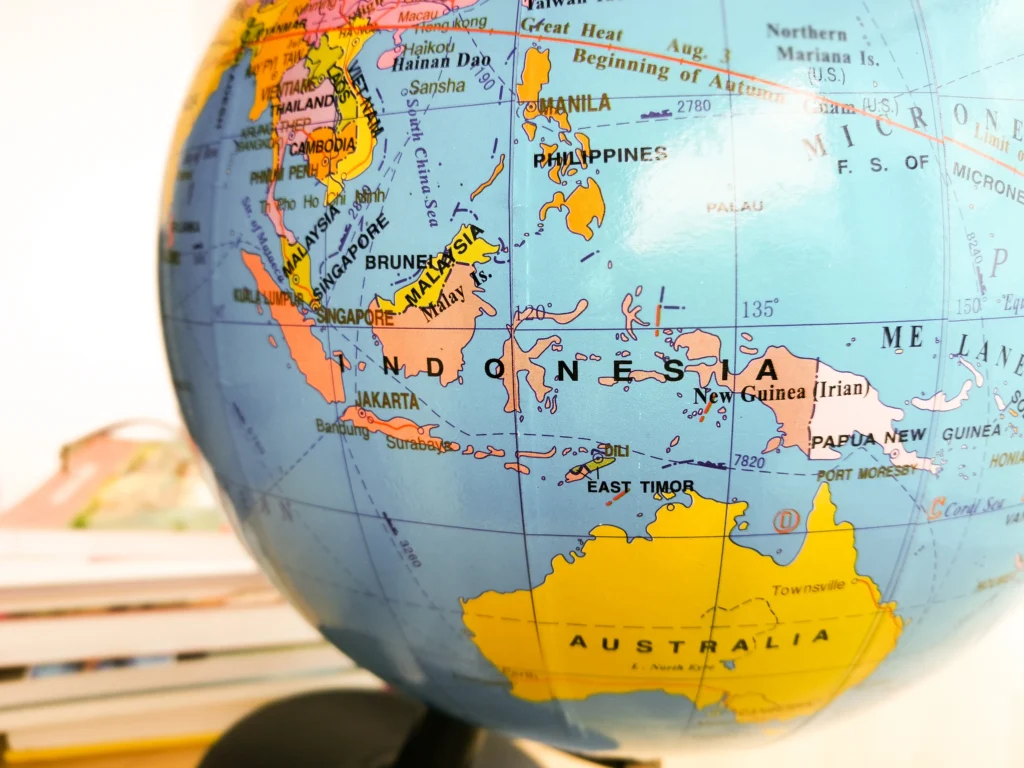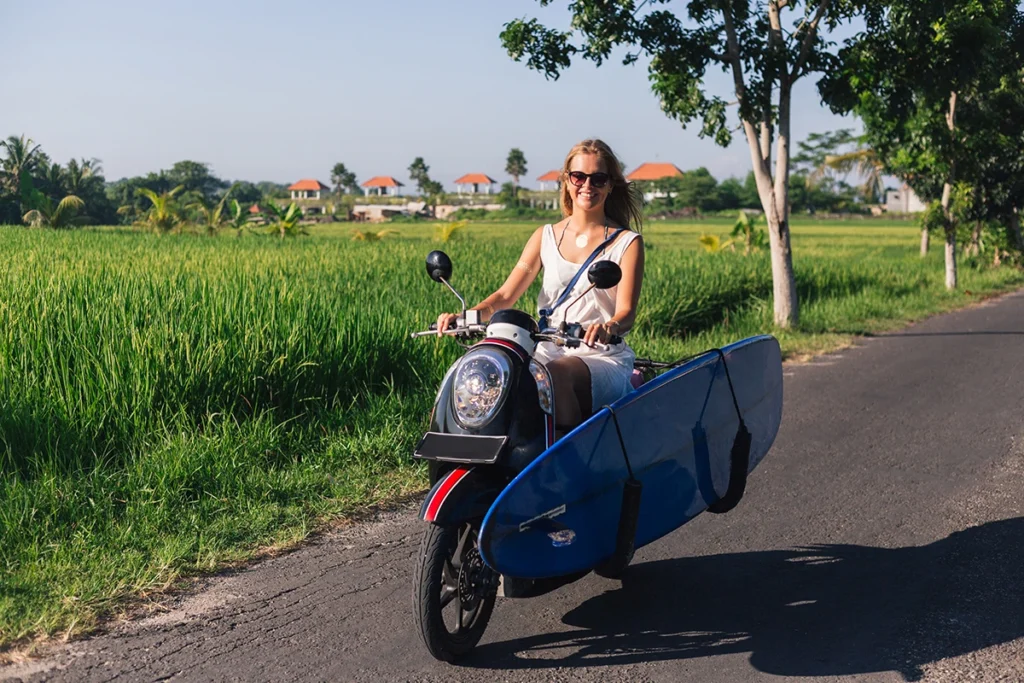In February, Indonesia offers a captivating blend of cultural festivities and natural beauty. From vibrant temple ceremonies to the stunning beaches of Bali, there’s something for every traveler to enjoy. The weather Indonesia in February is generally warm and pleasant, making it an ideal time to explore the diverse landscapes and indulge in outdoor activities. Whether you’re seeking adventure or relaxation, Indonesia has it all – from surfing on pristine waves to hiking through lush rainforests. This blog post will provide valuable insights into the best places to visit, local events not to be missed, and practical tips for making the most of your trip during this enchanting month.
Indonesia’s February Climate
Weather Overview
February in Indonesia is characterized by warm temperatures and high humidity. The average temperature across the archipelago ranges from 77°F to 86°F, with humidity levels varying between 70% and 90%. The weather conditions differ significantly from region to region, influenced by the country’s geographical diversity.

The coastal areas experience a tropical climate with temperatures averaging around 82°F and high humidity due to their proximity to the equator. In contrast, inland regions have slightly lower temperatures but higher humidity levels. This variation creates diverse microclimates within the country.
Regional Variations
Indonesia exhibits contrasting climates in different regions during February. While western parts of Sumatra may still be experiencing heavy rainfall due to the monsoon season, eastern regions like Bali and Nusa Tenggara are transitioning into drier conditions. The impact of the monsoon season varies widely across different areas, affecting travel plans and outdoor activities.
Moreover, unique weather patterns can be observed in various parts of Indonesia, such as Jakarta experiencing occasional thunderstorms while central Java enjoys relatively dry weather. These regional variations make it essential for travelers to consider specific destinations when planning their visit in February.
Rainfall Patterns
The distribution of rainfall in Indonesia during February is greatly influenced by the monsoon season. Coastal areas facing prevailing winds receive substantial precipitation, while some inland regions may experience less rain due to rain shadow effects caused by mountainous terrain.
Travelers should take into account these rainfall patterns when planning their trips as heavy rains might affect outdoor excursions or water-related activities such as snorkeling or diving on certain islands.
Temperature Averages
In February, Indonesia experiences average temperatures ranging from 77°F to 86°F throughout its various regions. However, there are notable differences based on altitude and geographic location; for instance, higher elevated areas like Bandung tend to have cooler temperatures compared to low-lying coastal regions like Semarang or Surabaya.
These temperature variations can impact travel decisions since some tourists prefer cooler climates for trekking or exploring cultural sites while others seek warmer beach destinations for relaxation under the sun.
Travel Tips for February
Packing Essentials
When traveling to Indonesia in February, it’s crucial to pack essential items for the rainy season. Don’t forget to bring a lightweight, waterproof jacket or poncho to stay dry during sudden downpours. It’s also advisable to pack quick-drying clothing and waterproof footwear.
For varying temperatures, pack light layers such as t-shirts, long-sleeved shirts, and a sweater or fleece. This ensures you can easily adjust your outfit according to the changing weather conditions across different regions of Indonesia.

To pack light and practical, consider versatile clothing items that can be mixed and matched. Opt for neutral colors that can be easily coordinated into multiple outfits. Packing travel-sized toiletries and minimal accessories helps keep your luggage compact.
Transportation Advice
During the rainy season in Indonesia, it’s best to utilize modes of transportation that are resilient against varied weather conditions. Consider using domestic flights when traveling between islands as they are less affected by heavy rainfall compared to land-based transportation options.
Navigating through varied weather conditions requires flexibility in travel plans. Keep an eye on weather forecasts and be prepared for potential delays due to inclement weather. When booking transportation in advance, choose reputable airlines or reliable car rental services with good safety records.

For local commuting within cities or towns, prioritize utilizing taxis with proper air conditioning or app-based ride-hailing services like Grab or Gojek which offer convenience during unpredictable rain showers.
Accommodation Tips
Choosing accommodations suitable for the rainy season is essential when visiting Indonesia in February. Look for hotels or guesthouses equipped with proper drainage systems around their premises as this helps prevent flooding during heavy rains.
To ensure a comfortable stay despite the rain, opt for accommodations offering amenities such as umbrellas for guests’ use and covered outdoor areas where you can still enjoy fresh air without getting wet.
If you’re looking for budget-friendly options during off-peak season travel in February, consider staying at hostels offering private rooms instead of dormitories. Alternatively, explore homestay opportunities where you can experience authentic Indonesian hospitality while enjoying affordable lodging.
February Festivals and Holidays
Cultural Celebrations
February in Indonesia is a vibrant time for cultural celebrations. The month marks the onset of the rainy season, bringing with it a host of unique festivals and events that showcase the country’s diverse traditions. From colorful parades to traditional ceremonies, there are numerous opportunities for visitors to immerse themselves in Indonesia’s rich cultural tapestry during this time.
One such event is the Bali Kite Festival, which takes place annually in July or August according to the Balinese calendar – equivalent to February on the Gregorian calendar. During this festival, giant kites of various shapes and sizes take to the skies as teams compete from different villages across Bali. It’s an incredible sight that offers a glimpse into the artistic prowess and communal spirit of Indonesia.
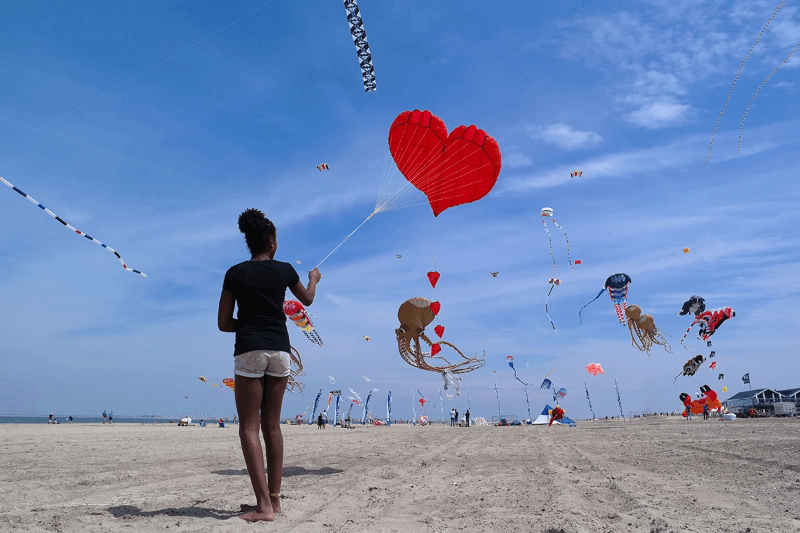
Another noteworthy celebration is Cap Go Meh, also known as “The Fifteenth Night.” This event falls fifteen days after Chinese New Year and is celebrated by ethnic Chinese communities across Indonesia, particularly in cities like Singkawang and Semarang. The festivities include colorful processions, dragon dances, and other traditional performances that reflect a blend of Chinese customs with local Indonesian culture.
Public Holidays
In addition to these cultural festivities, February also hosts several public holidays that hold significance for both locals and tourists alike. One key holiday during this month is Hari Raya Nyepi or Silent Day – a Hindu celebration observed primarily on the island of Bali. On this day, people observe complete silence while engaging in self-reflection through meditation or fasting as part of cleansing rituals before celebrating New Year (Saka). As a result, businesses close down entirely; no flights land or take off; no vehicles are allowed on roads; even internet services are turned off!
Another important national holiday during February is Tahun Baru Imlek or Chinese New Year which sees widespread celebrations throughout Indonesia, especially in areas with large Chinese populations such as Jakarta and Surabaya. Festivities include lively parades featuring lion dances accompanied by drums and cymbals along with vibrant decorations adorning streets and temples.
These public holidays not only offer an insight into local customs but also have an impact on travel plans for visitors exploring Indonesia during this period due to closures of businesses alongside transportation disruptions.
Best Destinations in February
Bali Highlights
Bali in February offers a unique blend of cultural experiences and natural beauty. Visitors can explore the iconic Tanah Lot temple, perched on a rock formation amidst crashing waves, creating an unforgettable sight. The island’s lush rice terraces are also at their greenest during this time, providing stunning photo opportunities. Despite being the rainy season, travelers can still enjoy outdoor activities such as white water rafting on the Ayung River or embarking on ATV tours through muddy jungle trails.

For those seeking a deeper connection with Balinese culture, attending traditional dance performances is a must-do experience. These captivating displays of storytelling through movement and music take place regularly across the island and offer insight into local folklore and mythology. February marks the start of Nyepi, Bali’s Day of Silence celebration. This unique festival involves a day of complete silence, fasting, and meditation to mark the Balinese New Year based on the lunar calendar.
Java Attractions
In February, Java beckons with its wealth of historical and cultural attractions. The ancient Buddhist monument Borobudur Temple stands as one of Indonesia’s most important archaeological sites and provides an awe-inspiring setting for sunrise or sunset visits. Another notable destination is Yogyakarta – home to two UNESCO World Heritage Sites: Borobudur Temple and Prambanan Temple Complex.
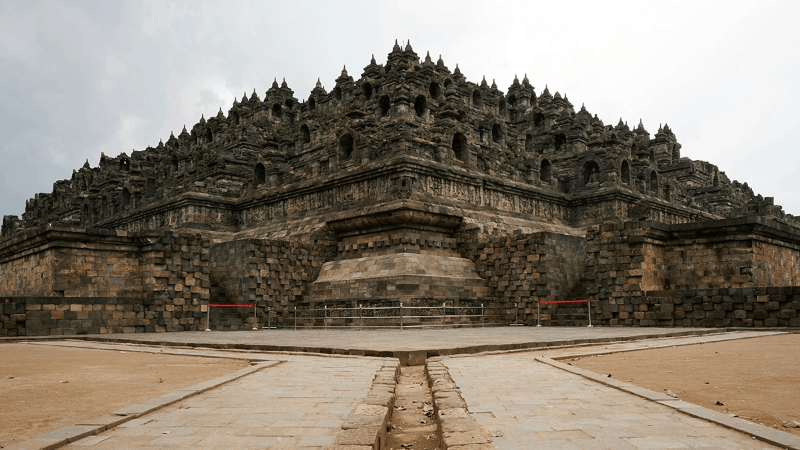
While planning a visit to Java in February, it’s essential to consider weather conditions as some areas may experience heavy rainfall during this period. However, these downpours often lead to vibrant green landscapes that add an extra layer of beauty to sights like Mount Bromo – an otherworldly volcanic landscape that becomes even more dramatic when shrouded in mist after rain showers.
Sulawesi Adventures
Sulawesi presents adventurous travelers with diverse outdoor pursuits against breathtaking natural backdrops throughout February. The Tana Toraja region captivates visitors with its elaborate funeral ceremonies set against stunning mountainous landscapes adorned with traditional Tongkonan houses. Nature enthusiasts can embark on snorkeling or diving expeditions around Bunaken National Marine Park where they’ll encounter vibrant coral reefs teeming with marine life including sea turtles and reef sharks. However, it’s crucial for adventure-seekers visiting Sulawesi in February to be mindful of weather patterns which may impact certain outdoor activities due to potential rainfall.
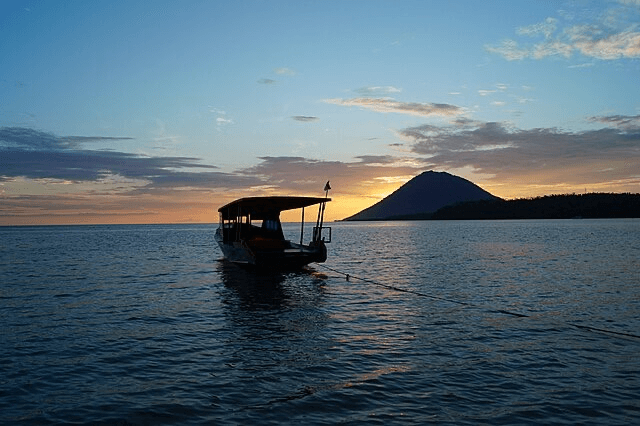
Activities and Events
Outdoor Excursions
February in Indonesia presents ample opportunities for outdoor excursions. Travelers can engage in trekking, hiking, and various outdoor activities amidst the lush landscapes of the country. With numerous national parks and nature reserves to visit, such as Gunung Leuser National Park or Raja Ampat, adventurers can immerse themselves in the natural beauty of Indonesia.
The rainy season during February may impact outdoor excursions, causing some areas to be inaccessible due to flooding or muddy trails. However, with proper planning and guidance from local tour operators, visitors can still enjoy many outdoor activities while considering the weather conditions.
-
Trekking
-
Hiking
-
Visiting national parks
-
Nature reserves
-
Impact of rainy season
Cultural Tours
For those interested in cultural experiences, Indonesia offers an array of tours that allow travelers to engage with local traditions. From exploring historical sites like Borobudur Temple or Prambanan Temple to visiting museums showcasing Indonesia’s rich heritage, there are plenty of opportunities for cultural enrichment.
During February’s rainy season, it is essential for travelers embarking on cultural tours to consider indoor attractions that provide shelter from potential downpours. By visiting museums or attending traditional performances held indoors, visitors can continue their cultural exploration while staying dry.
-
Historical sites
-
Museums
-
Rainy season impact
Leisure Activities
In addition to adventurous and culturally immersive experiences, February also provides leisurely options for a relaxing getaway in Indonesia. Travelers seeking relaxation can indulge in spa treatments at luxurious wellness retreats or partake in beach activities along the stunning coastlines.
Moreover, when encountering rainy days during their visit, tourists have alternative leisure options available such as indulging in spa treatments or engaging in indoor activities provided by resorts and accommodations across the country.
Itinerary Suggestions
Bali Itineraries
In Indonesia in February, exploring Bali can be a delightful experience despite the rainy season. Sample itineraries for this time of year might include visits to cultural attractions such as Ubud’s art markets and traditional dance performances, as well as outdoor adventures like waterfall hikes or beach activities. To maximize your time during the rainy season, consider planning indoor activities for the wettest days and keeping outdoor excursions flexible based on weather forecasts.
Balancing indoor and outdoor activities is crucial when crafting your itinerary for Bali in February. For example, you could plan a day of museum visits, followed by a cooking class or spa treatment while leaving room for spontaneous beach outings if the weather permits.
Java Routes
When exploring Java’s highlights in February, it’s essential to have suggested routes that take into account varying weather conditions and modes of transportation between key destinations. For instance, visiting Yogyakarta’s ancient temples may be best enjoyed during drier periods while traveling to Mount Bromo should factor in potential fog or rain delays.
Modes of transportation between key destinations in Java can include trains, buses, private drivers, or domestic flights depending on your comfort level with each option and budget constraints.
Navigating through varying weather conditions across Java requires flexibility within your itinerary. This might involve rearranging planned activities based on daily forecasts or having backup indoor options available if outdoor plans are impacted by rain.
Lesser-Known Gems
Exploring Indonesia’s lesser-known spots off the beaten path can lead to unique discoveries even during February’s rainy season. Hidden gems offer opportunities for immersive experiences away from crowds often found at popular tourist sites.
Lesser-known destinations with unique appeal present chances to connect with local culture and nature without the typical tourist influx experienced at more famous locations.
The impact of rainy season on visiting lesser-known spots involves considering accessibility due to potentially muddy roads or limited facilities during heavy rainfall. However, these challenges can also add an element of adventure and exclusivity to your exploration of these hidden treasures.
Travel Budgeting
Cost Considerations
Traveling to Indonesia in February can offer some budget-friendly options. During the off-season, costs for accommodation, dining, and activities are generally lower compared to peak tourist months. This means travelers can take advantage of more affordable prices and potentially save money on their trip.
For accommodation, consider staying in guesthouses or hostels instead of luxury hotels. These options often provide comfortable lodging at a fraction of the cost. Exploring local street food markets or eateries can offer delicious meals at reasonable prices, allowing travelers to experience authentic Indonesian cuisine without breaking the bank.
Look for free or low-cost attractions such as visiting public beaches, exploring nature parks, or participating in cultural events. By planning ahead and researching budget-friendly options, travelers can make the most of their trip without overspending.
Bargain Opportunities
Despite being the rainy season in Indonesia during February, there are still opportunities for bargain deals and discounts. Many tour companies and travel agencies offer special promotions during this time to attract visitors despite the weather conditions. It’s worth keeping an eye out for discounted tour packages that include accommodations and activities.
Furthermore, shopping enthusiasts may find great bargains during this period due to clearance sales and promotions aimed at attracting customers despite the rainy weather. Whether it’s traditional handicrafts or trendy souvenirs, travelers can take advantage of reduced prices on various items throughout their visit.
In addition to these specific opportunities related to travel arrangements and shopping experiences while traveling in February—especially during a traditionally less popular time—there are general ways that tourists might save money when they’re away from home.
Weather Impact on Travel
Rainy Season Effects
February in Indonesia marks the peak of the rainy season, which can significantly impact travel plans. The heavy rainfall and potential flooding may disrupt transportation and outdoor activities. However, travelers can still navigate through these conditions by being prepared with appropriate clothing, waterproof gear, and flexible itineraries.
It’s essential to manage expectations during the rainy season in Indonesia. Travelers should anticipate delays in transportation, occasional road closures due to flooding, and limited access to certain areas. By staying informed about weather forecasts and road conditions, visitors can adjust their plans accordingly.
Embracing the wet weather is crucial for a fulfilling travel experience during February in Indonesia. Despite the rain, there are still plenty of opportunities for exploration and enjoyment. For instance:
-
Visiting lush green landscapes that come alive during the rainy season.
-
Exploring waterfalls that are at their most majestic during this time of year.
-
Participating in cultural activities or indoor attractions to balance out outdoor adventures affected by rain.
Enjoying the Outdoors
Travelers visiting Indonesia in February can make the most of outdoor activities despite the frequent rain showers. With proper preparation such as waterproof clothing and sturdy footwear, individuals can still engage in various nature-based experiences like hiking through rainforests or trekking to see breathtaking natural wonders.
To fully embrace nature during Indonesia’s wet season requires a positive mindset and adaptability. Instead of letting the rain deter them from enjoying outdoor excursions, visitors should view it as an opportunity to witness vibrant flora and fauna thriving amidst moist conditions.
Certain outdoor experiences shine even brighter amid February’s rainfall:
-
Witnessing stunning displays of tropical flowers blooming abundantly.
-
Observing unique wildlife species that become more active during this period.
Crowd and Cost Dynamics
Tourist Seasons
February is a part of the peak tourist season in Indonesia. During this time, many tourists flock to popular destinations such as Bali, Yogyakarta, and Jakarta. The influx of tourists can lead to crowded attractions, longer wait times at popular restaurants, and higher prices for accommodations.
Managing crowds during peak tourist seasons can be challenging but not impossible. Travelers can plan their visits to popular attractions during off-peak hours or opt for lesser-known destinations that offer a more tranquil experience. For example, instead of visiting the crowded beaches in Bali, travelers can explore the natural beauty of Raja Ampat in West Papua.
Price Comparisons
There’s a noticeable difference between high and low seasons in Indonesia. During February, which falls within the peak tourist season, prices for accommodations, tours, and activities tend to be higher compared to the off-peak months. However, despite the higher costs during this period, travelers can still find value for money by making strategic choices.
For instance:
-
Opting for all-inclusive packages or booking accommodations with complimentary amenities can help offset some costs.
-
Exploring local street food markets instead of dining at upscale restaurants allows travelers to enjoy delicious meals at lower prices.
-
Booking tours and activities directly through local operators may offer better deals compared to third-party vendors catering primarily to tourists.
Summary
Indonesia in February offers a diverse range of experiences, from vibrant festivals to tranquil beach getaways. The climate is generally warm and inviting, making it an ideal time to explore the country’s natural beauty and cultural richness. Travelers should consider the specific weather conditions and popular events when planning their itinerary, as these factors can significantly impact their overall experience. By being mindful of travel tips, budgeting, and crowd dynamics, visitors can make the most of their trip to Indonesia in February.
For those considering a visit to Indonesia in February, it’s essential to delve into the details of each destination and event to tailor the experience to personal preferences. Whether seeking adventure, relaxation, or cultural immersion, Indonesia has something to offer for every traveler during this time of year.
Frequently Asked Questions
What is the climate like in Indonesia during February?
In February, Indonesia experiences a tropical climate with varying temperatures and humidity levels across different regions. The weather typically includes warm temperatures, occasional rainfall, and high humidity, making it ideal for beach activities and outdoor adventures.
Are there any notable festivals or holidays in Indonesia during February?
Yes, February in Indonesia is marked by various cultural festivals and religious celebrations. One of the most prominent events is the Chinese New Year festivities, which feature vibrant parades, traditional performances, and delicious culinary offerings throughout the country.
Which destinations are recommended for travel in Indonesia during February?
Popular destinations to visit in Indonesia during February include Bali, Lombok, Yogyakarta, and Jakarta. These locations offer a diverse range of attractions such as stunning beaches, historical landmarks, vibrant nightlife scenes, and opportunities for immersive cultural experiences.
How does weather impact travel plans in Indonesia during February?
The weather can influence travel activities in Indonesia during February due to occasional rainfall and high humidity levels. It’s essential for travelers to pack appropriate clothing for both sunny days and potential rain showers while also staying updated on local weather forecasts.
What are some budgeting tips for traveling to Indonesia in February?
Travelers visiting Indonesia in February should consider factors such as accommodation costs, transportation expenses (including flights within the country), dining options ranging from street food to upscale restaurants. Additionally budgeting for entrance fees at tourist attractions will help manage overall expenses effectively.

